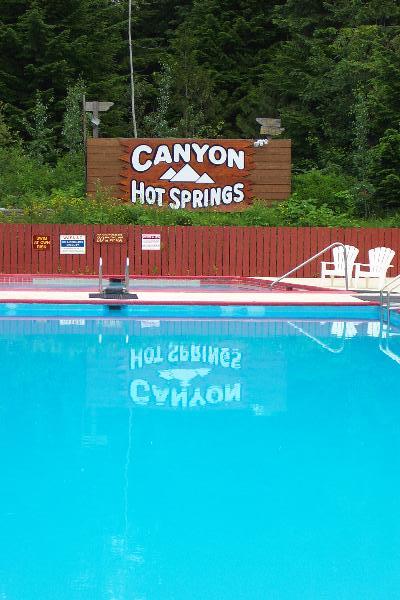
Water from the spring is piped almost 2 miles down the valley side to feed the 15,000-gallon hot pool and the 60,000-gallon swimming pool. Whether you choose to soak in the hot pool or swim in the warm swimming pool, your visit is sure to be an exhilarating experience. Time spent in the mineral pools is a great way to relieve the aches and pains of travelling while you relax and enjoy the pools and surrounding scenery. The mineral waters of Albert Canyon were allegedly discovered by CPR workmen at the turn of the century. The railway employees dug a pit at the hot springs and lined it with heavy timbers. The coordinates will take you near one of the pools where you can park. The natural hot springs are well up a steep hillside so visiting the pools would be your best bet.
The Nature of Hot Springs
Where does the spring water come from? Most of the rain and snow that falls on the slopes of a mountain ends up in rivers and streams. Some of it, however, filters down through the cracks and pores in the earths surface, pulled by gravity to depths of up to three kilometres below the surface. It is this water which later returns to the surface in our hot springs.
Why is it warm? As it seeps into the ground, the water becomes hotter and hotter as it descends. The source of the heat is from the rocks which are hot due to magma residing a few kilometers below the surface. When the water gets hot enough it boils, and the resulting pressure forces it upward, just like the water in a coffee percolator. The speed at which the water rises, and the degree to which it mixes with cold ground water, causes the resulting hot springs to have different temperatures.
Why does it smell? As the water heats up, it dissolves minerals in the surrounding rock. When these dissolved minerals break down, they release hydrogen sulphide gas, which smells like rotten eggs. Pyrite and gypsum are two common sulphur-bearing minerals dissolved in the Banff and Miette hot springs. This is probably the most common occurrence. However, some hot springs are odourless such as the Radium Hot Springs due to the type of rock in that area.
What is tufa? As the hot springs water bubbles from its underground source onto the surface, it begins to drop the load of minerals (precipitating) it gained on its travels through the ground. One of the common minerals is calcium carbonate which hardens into a porous grey/brown rock called tufa when it precipitates onto the surface and is usually seen around each hot spring.
As of November 18, 2006 to log this Earthcache:
You must post some unique bit of information regarding the site that you learn while there. Taking a water temperature measurement of the hot spring or pool is acceptable. Other possible information could be the size of the hotspring or the water flow rate. I'll leave it up to each cacher to decide what to post to show that they have learned something. I will monitor logs for appropriate information. Posting a photo is not required but appreciated. Unfortunately, any log that does not meet the requirements will be deleted. Thanks for visiting an Earthcache!